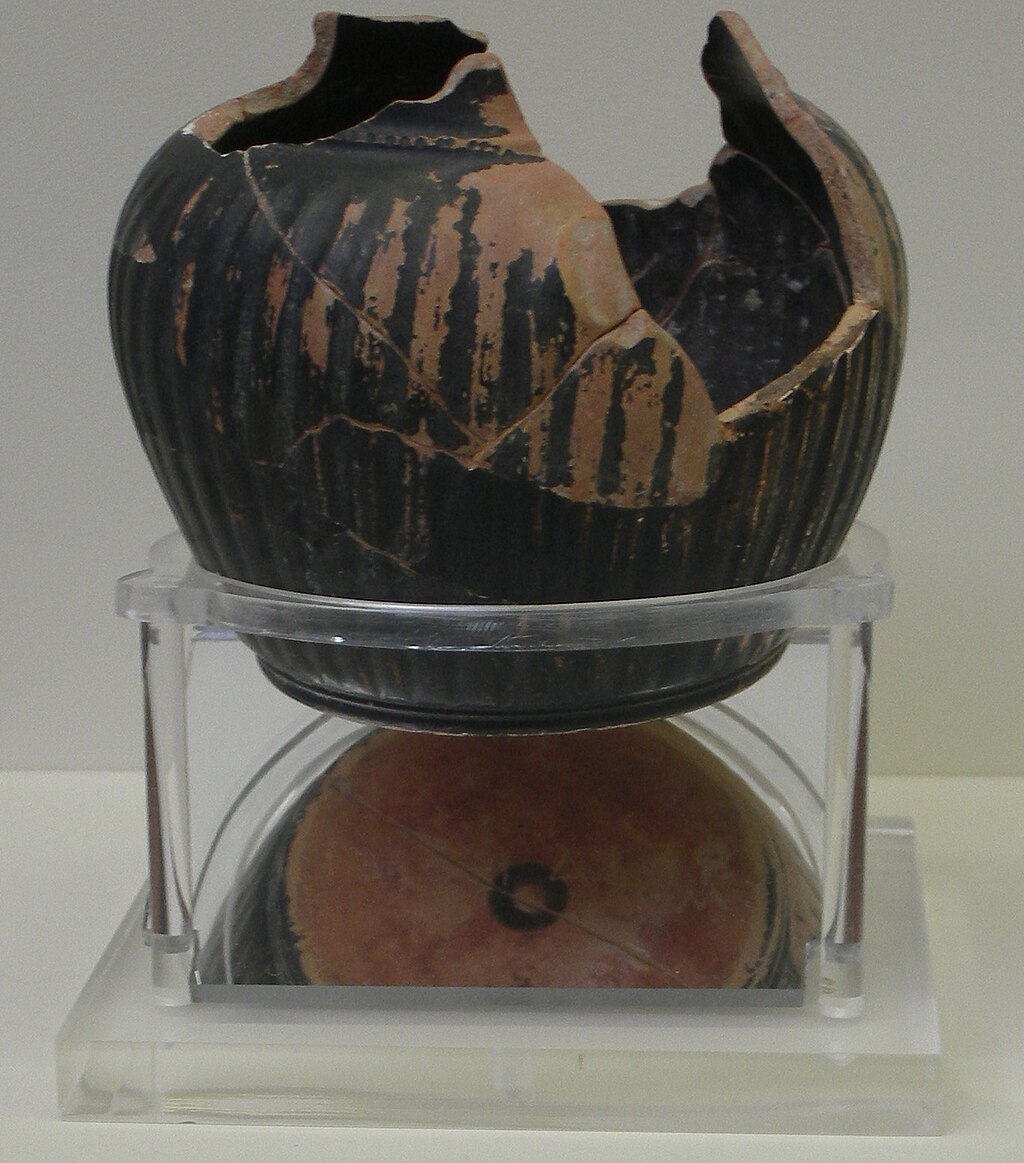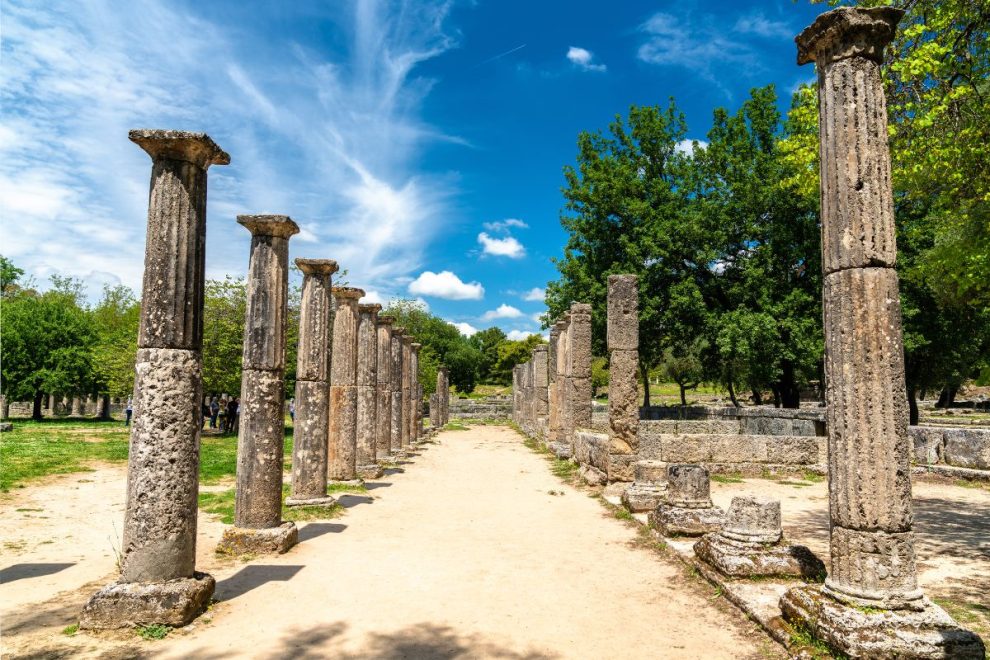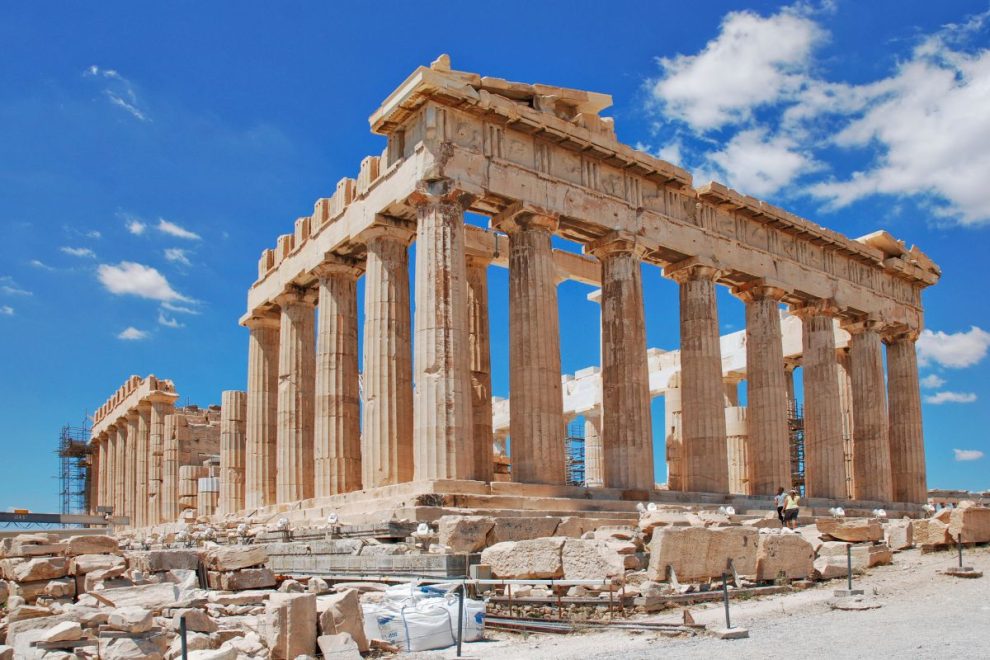
Pheidias was one of the most important sculptors of the classical era.
Key Highlights
- Pheidias was a sculptor from Athens. He is known as one of the best artists from ancient Greece.
- He became famous for his great work with bronze and chryselephantine sculpture, which uses gold and ivory.
- Some of Pheidias’s best pieces are the Statue of Zeus at Olympia and the Athena Parthenos in Athens. Sadly, both pieces are now lost to time.
- He was the artistic director for building the Parthenon. He played a big role in its famous design.
- Although many details of his life are unclear, old writers like Pausanias and Plutarch praised his artistic skill.
His reputation has remained intact over time. He has been recognized as an artist since antiquity. However, the information we have about his life is scarce.
He was born in Athens, in the 5th century BC. He was the son of Harmidis and belonged to a rich family. This is almost everything we know about Pheidias. His artistic talent became apparent very early on. He started with painting and continued as a student of the sculptures Igia of Athinaiou and Ageladas of Argeio. He stood out for his skills in painting and architecture, but he excelled in sculpture. None of Pheidias’ works seem to have survived. Most are known from ancient references and through exact copies made by the Romans. Many writers such as Plutarch, Plato, Philochorus, Pausanias, Pliny the Elder refer to Pheidias in detail.
Pheidias the Pioneer
Pheidias was a bold and pioneering artist. He expanded the ancient Greek art and technique giving it a new breath. He is the creator of Art that today we call Classical which reflects intense idealism. He was inspired by ancient mythology, theogony while in his early works his themes are drawn from the historical events of the time.
Pheidias’ favorite materials were bronze, copper, gold, ivory, while he rarely used marble, which was in abundance and was chosen by contemporary artists. In his first works, he made a bronze sculpture which was a complex of gods and people. It was created to dedicate to Delphi for the victory of the Greeks in Marathon against the Persians. The symbolism was clear as it united people, such as Miltiades and other warriors, with the gods, Pallas Athena, and the god Apollo. Pheidias created colossal statues and was the artist who for the first time combined gold and ivory.
The Early Life of Pheidias
Pheidias was born in Athens around 490 BCE. We know very little about his early life. It is unclear how he was trained, but he likely learned from famous Athenian sculptors like Hegias and Ageladas. No matter his training, Pheidias soon became an important person in ancient Greek art history. His artistic career grew during a key time in Athenian history. This was when the Greeks won an important battle against the Persians at Marathon. This event created a strong feeling of national pride and a desire to celebrate the win.
Origins and Education
Pheidias entered a thriving arts world in Athens. Ancient Greece was on the rise and full of creativity. There was a big demand for talented artists, especially sculptors. Athens wanted to show its strength and value. They wanted to beautify their sacred places with amazing monuments. We don’t know much about how Pheidias learned his skills. Old records mainly focus on what he did later in life. They don’t provide many details about his early training in art. However, his artistic style in sculpture shows that he was good at using bronze and the difficult chryselephantine method. This suggests he had a strong education. He probably learned by working with famous masters and studying old sculpting styles by himself. In the end, Pheidias became a key figure in this active artistic world. His special style fit the greatness that Athens wanted to show.
Initial Works and Rise to Fame
Pheidias became well-known when Pericles had a big plan. He wanted to make the Athenian Acropolis a symbol of Athenian strength and democracy. This project needed the best artists in ancient Greece. Pheidias was one of those artists who took on this important task. One of his earliest famous works was the large bronze statue of Athena Promachos. It was on the Acropolis and towered over the Athenian skyline. This stunning statue was visible from far away. It displayed Athenian power to all, shining a light on the city’s new glory. The statue’s tall height and key location helped people see Pheidias as a talented sculptor. This was only the beginning of a career that would transform ancient Greek art for all time.

Pheidias’ Masterpieces
Pheidias created many wonderful sculptures, but he is best known for two main works. These are the Statue of Zeus at Olympia and the Athena Parthenos in the Parthenon of Athens. Unfortunately, both artworks are now lost, but they amazed the ancient world and showed his great talent. These large sculptures were made from ivory and gold. They showed the great power of Zeus and Athena. They made a big impression on everyone who saw them. Even though we cannot see these works now, their impact goes on. They inspire many artists today and remind us of the best of Classical Greek sculpture.
The Statue of Zeus at Olympia
The large Statue of Zeus at Olympia was one of the Seven Wonders of the Ancient World. It showed how great the god was and how skilled the artist, Pheidias, was. The statue stood in the Temple of Zeus. It was a piece of art that captured the essence of the divine. Old tales tell of Zeus sitting inside, his powerful shape filling the temple. The statue was made from ivory and gold. It stood more than 40 feet tall, making people feel awed and respectful. In his right hand, the god held Nike, the goddess of victory. In his left hand, he held a scepter, showing his great power. Sadly, the Statue of Zeus at Olympia, like many ancient wonders, did not survive. A fire destroyed it in the 5th century CE. Now, we only know about its beauty from old writings, pictures on coins, and stories from people who had the chance to see it.
The Parthenon Sculptures
Pheidias was a famous sculptor from Ancient Greece. He is known for his amazing artistic work that changed history. He worked on the Parthenon, where he was the main artist. One of his best-known creations there is the huge statue of Athena Parthenos, which shows the goddess Athena. The sculptures he made were highly respected and held great religious meaning in Ancient Greece. The statues of Athena made by Pheidias were placed on the Acropolis of Athens, showing his great skill in traditional Greek sculpture. The works of Pheidias are still around today. They can be found in pieces in many museums around the world. These fragments pull in art lovers and archaeologists because of their lasting beauty. The fine details and skill in these pieces attract viewers. They provide a look into the greatness of Ancient Greek art and show how Pheidias has influenced sculpture.
Lemnian Athena
Finally, Lemnian Athena, unlike the other two, was made of copper. It was created to be offered to Lemnos, which had been colonized by the Athenians (451 and 448 BC), as Pausanias reports.

Reconstruction of the Acropolis
Pericles financed the reconstruction and beautification of the Acropolis of Athens from the fund of the Delian League. Pericles’ opponents, to tarnish his reputation and work, accused Pheidias of embezzling part of the gold intended for the construction of the statue of Athena Parthenos with other material and that he kept the gold for himself. It is said that the gold of the statue of Athena was worth 44 Attic talents. Pheidias managed to refute his accusers. He had made sure that the golden part of the statue consisted of prefabricated pieces. Thus, after disassembling them, weighing them and after their weight was found to be exactly equivalent to the talents, he was released from the category. However, he did not escape prison. He was convicted of disrespect after he wanted to add Pericles and himself, as warriors, to the decoration of the shield of Athena the Virgin. The same accusations were leveled against Pheidias for the construction of the statue of Zeus and this time he was imprisoned.
General Supervisor and Artistic Curator
Pheidias supervised all the works on the Acropolis and is considered to have illustrated the frieze, the gables, and the metopes of the Parthenon. The quality of his work, the harmony of his work, and his artistic value become apparent through the reliefs of the Parthenon. The sculptures of the Parthenon were carved in Pentelic marble, painted, and in many of them, there were metallic details. They are considered unique masterpieces. The movement in the figures, the clarity in the rendering of the human body, the emphasis on detail become apparent in the sculptures of the gables of the Parthenon where the figures were processed even from the invisible backside. He collaborated with artists from various workshops in the decoration of the monuments that were erected on the hill. Among them were collaborators and students of Pheidias such as the famous Myron, Agoracritus, Alcamenes who continued and completed his work even after his death.
His Workshop in Ancient Olympia
Half a century ago excavations in Olympia came to light along with other finds and a mug. In the mug, there was the inscription: ‘I belong to Pheidias’. This is the workshop where Pheidias is considered to have created the ivory statue of Zeus. Scholars were thus allowed to obtain information on how the sculpture was made. As for the end of Pheidias’s life, there is again not much information. He may have died in prison after being convicted of disobedience or exiled. Pheidias’s work inspired artists from the Hellenistic period onwards and continues to influence the aesthetics of the art world. Pheidias was a well-known artist from Ancient Greece. He is famous for works like the Statue of Zeus at Olympia and the Parthenon Sculptures. People had mixed feelings about him, but his art still amazes many today. His early life and rise to fame reveal that he was a complex person. Even with the talks about his exile, his impact is still present. The statues and sculptures he made are great examples of ancient art. They show his unique skill and creativity. Explore the world of Pheidias to discover how he changed classical art in Greece.
Controversies Surrounding Pheidias
Pheidias was a great artist, but his years in Athens were not easy. His enemies, who did not like Pericles, accused him of taking money. They said he stole gold that was for the Athena Parthenos statue. They also said he put his own image and Pericles’ image on the statue’s shield. These accusations grew quickly in Athens. People still argue about whether these accusations are true. They reveal big political problems and how public opinions are changing. We may not know if the claims are right, but they remind us that even famous artists like Pheidias can have their good names damaged easily.
Accusations of Embezzlement
The claims against Pheidias created a lot of noise in Athenian society. His rivals, who did not like Pericles, said he stole gold for the Athena Parthenos. They alleged he swapped some gold for cheaper materials. This accusation was meant to hurt both Pheidias and Pericles, attack his truthfulness, and damage his reputation. Ancient sources tell different stories about how Pheidias responded to these claims. Some say that he was prepared for such accusations. It is said that he made the golden clothes of Athena Parthenos removable. This way, he could weigh them separately and prove his innocence. Even if Pheidias proved he did not steal, more issues popped up. New claims of being rude came up. This could damage his name and reputation forever.
Exile and Historical Debate
The claim of not being religious was very serious in ancient Greece. It was based on reports that Pheidias put pictures of himself and Pericles on the holy shield of Athena Parthenos. Many people thought this was disrespectful. They felt it placed regular people with the gods. This made those who were against Pheidias very angry. After these claims, old writers tell different tales about what happened to Pheidias. Some say he went to prison, which ended his work as an artist. Others say he left Athens to get away from the political troubles. The facts about Pheidias’s final years are unclear, and it’s tough for historians to discover the whole truth. Even with the disagreements in his later years, Pheidias’s art remained respected. Ancient writers like Pausanias and Lucian still praised his skills. They saw how much his work affected Greek sculpture.
Pheidias was a well-known artist from Ancient Greece. He is famous for works like the Statue of Zeus at Olympia and the Parthenon Sculptures. People had mixed feelings about him, but his art still amazes many today. His early life and rise to fame reveal that he was a complex person. Even with the talks about his exile, his impact is still present. The statues and sculptures he made are great examples of ancient art. They show his unique skill and creativity. Explore the world of Pheidias to discover how he changed classical art in Greece.
Interested in Pheidia’s work? Our fine ribbed mugs, are black-glazed modeled after an original artifact from the Athens Agora collection (object P 23849), dating to around 420 BCE. Known as Pheidias’ shape, it features a double handle with rope-like incisions where the body meets the rim, a low ring-shaped foot, and neatly spaced narrow reeding on the body.
Feature Image by: Cédric Boissière
This file is licensed under the Creative Commons Attribution-Share Alike 3.0 Unported license.
